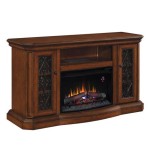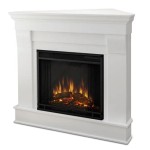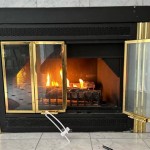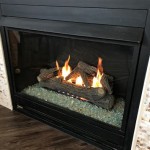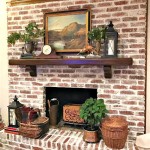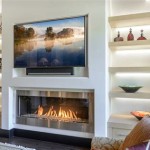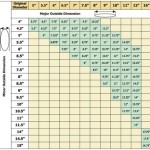Squirrel in Fireplace: A Homeowner's Guide to Safe Removal and Prevention
Discovering a squirrel inside a fireplace can be a disconcerting experience for homeowners. These resourceful creatures often seek shelter and warmth in chimneys, unaware of the potential dangers within the flue. This article provides a comprehensive overview of how squirrels end up in fireplaces, the risks they pose, safe removal strategies, and preventative measures to minimize future occurrences.
How Squirrels Access Fireplaces
Squirrels are adept climbers and explorers, readily taking advantage of any perceived opportunity for shelter. Fireplaces, with their vertical chimneys and often-unsealed openings, present an attractive ingress point. The following factors contribute to squirrels accessing fireplaces:
Chimney Construction: Chimneys with damaged or missing chimney caps provide an unobstructed entry point for squirrels. The open flue becomes an inviting, dark space, particularly during colder months or nesting season. Older chimneys, which may have cracks and crevices within the brickwork or mortar, further facilitate entry.
Overhanging Branches: Trees with branches overhanging the roof or close to the chimney offer squirrels a convenient bridge to access the chimney opening. These branches act as a natural runway, eliminating the need for the squirrel to climb directly up the building's exterior.
Seeking Shelter: Squirrels may enter a chimney to escape harsh weather conditions like rain, snow, or extreme temperatures. The chimney provides a relatively dry and insulated environment, offering refuge from the elements. During the spring and fall, squirrels also seek safe and secluded locations to build nests and raise their young.
Attraction to Food Sources: Occasionally, squirrels may be attracted to a fireplace due to the presence of food remnants. Homeowners who occasionally eat near the fireplace or leave crumbs in the area might inadvertently attract squirrels seeking an easy meal. Nesting materials used to build nests may also attract other animals.
Risks Associated with Squirrels in Fireplaces
The presence of a squirrel in a fireplace presents several potential risks for both the homeowner and the animal itself. Understanding these risks is crucial for addressing the situation safely and effectively.
Property Damage: Squirrels are known for their gnawing behavior. Inside a chimney, they may chew on wires, insulation, and other structural components. This can lead to costly repairs and potential fire hazards. They can also damage the damper, making it difficult to seal the fireplace properly.
Disease Transmission: Squirrels can carry a variety of diseases and parasites, including rabies, fleas, ticks, and mites. While the risk of direct transmission to humans is relatively low, contact with squirrel droppings or urine can pose a health hazard. These droppings can also attract other pests, such as insects and rodents.
Fire Hazard: Squirrels frequently build nests inside chimneys using dry leaves, twigs, and other flammable materials. These nests can obstruct the flue, preventing proper ventilation and increasing the risk of carbon monoxide poisoning if the fireplace is used. Furthermore, a nest close to the firebox could ignite, leading to a chimney fire.
Squirrel Distress: A squirrel trapped in a fireplace can experience significant stress and anxiety. Without food or water, it can quickly become dehydrated and weakened. In some cases, the squirrel may become injured while attempting to escape, further compounding the problem.
Safe Removal Strategies for Squirrels in Fireplaces
Removing a squirrel from a fireplace requires patience and careful consideration for both the animal's safety and the homeowner's well-being. It is important to avoid aggressive or harmful methods.
Assess the Situation: Before attempting any removal method, carefully assess the situation. Determine if the squirrel is an adult or a baby, and whether there are any signs of injury. Observe the squirrel's behavior to gauge its level of distress. Avoid approaching the squirrel directly, as this may frighten it and cause it to bolt.
Allow Natural Escape: The safest option is typically to allow the squirrel a natural opportunity to escape. Open the fireplace damper fully and remove any obstructions from the hearth. Place a sturdy rope or ladder inside the fireplace, extending from the floor to the chimney opening, providing the squirrel with a means of climbing out. Leave the room and allow the squirrel ample time to find its way out, usually overnight.
Create an Escape Route: If the squirrel is unable to climb out on its own, create an artificial escape route. Drape a thick blanket or sheet from the fireplace opening to the floor, creating a ramp. The rough texture will provide the squirrel with better grip for climbing. Place a bowl of water near the base of the ramp to encourage the squirrel to approach. Monitor the situation from a distance and allow the squirrel time to escape.
Professional Assistance: If the squirrel is injured, aggressive, or if there are baby squirrels present, contacting a professional wildlife removal service is recommended. These professionals have the experience and equipment necessary to safely and humanely remove the squirrel without harming it or causing further damage to the property. They can also assess the chimney for any other potential entry points and recommend preventative measures.
Avoid Direct Contact: It is crucial to avoid direct contact with the squirrel, as this can increase the risk of bites or scratches. If direct contact is unavoidable, wear thick gloves and protective clothing to minimize the risk of injury or disease transmission. After any potential contact with a squirrel, wash hands thoroughly with soap and water.
Preventative Measures to Deter Squirrels from Chimneys
Once a squirrel has been removed from a fireplace, it is essential to implement preventative measures to reduce the likelihood of future occurrences. These measures focus on securing the chimney and eliminating potential attractants.
Install a Chimney Cap: Installing a chimney cap is the most effective way to prevent squirrels and other animals from entering the chimney. Choose a sturdy cap made of stainless steel or galvanized steel, with a mesh screen that is small enough to prevent squirrels from squeezing through. Ensure the cap is properly fitted and securely attached to the chimney.
Trim Overhanging Branches: Trim any tree branches that overhang the roof or are close to the chimney. This eliminates a natural bridge for squirrels, making it more difficult for them to access the chimney opening. Maintain a distance of at least 6-8 feet between branches and the roofline.
Seal Cracks and Crevices: Inspect the chimney for any cracks or crevices in the brickwork or mortar. Seal these openings with appropriate masonry sealant or mortar to prevent squirrels from gaining entry. Pay particular attention to the area around the flue liner and the base of the chimney.
Remove Food Sources: Eliminate any potential food sources that may attract squirrels to the fireplace area. Avoid eating near the fireplace and promptly clean up any crumbs or spills. Store firewood away from the house to prevent squirrels from nesting in the woodpile. Clean up any fallen nuts or seeds around the yard that may attract squirrels.
Regular Chimney Inspections: Schedule regular chimney inspections to identify any potential problems, such as damaged chimney caps or cracks in the brickwork. Early detection and repair of these issues can prevent squirrels from gaining access to the chimney. A professional chimney sweep can also remove any existing nests or debris from the flue.
Deterrent Products: Consider using squirrel deterrent products, such as ultrasonic devices or squirrel-repellent sprays. These products can help to discourage squirrels from approaching the chimney. However, it is important to choose products that are safe for both humans and animals and to follow the manufacturer's instructions carefully.
Addressing a squirrel in a fireplace requires a combination of understanding squirrel behavior, implementing safe removal practices, and undertaking preventative measures. With careful attention to these areas, homeowners can effectively manage this problem and protect their property from future intrusions.

How To Remove Squirrel In The Fireplace Blog At Fireplacemall

Squirrel In The Chimney What To Do Stuck Cavity

How To Get Squirrels Out Of A Chimney

Squirrels Your Chimney Cap Install Certified Techs

How To Get A Squirrel Out Of The Chimney

How To Get Squirrels Out Of A Chimney

Squirrels In The Chimney Get Rid Of Them With Skedaddle Humane Wildlife Control

What To Do About A Squirrel In The Fireplace

Can Squirrels Get Through My Chimney

Squirrel In Chimney Xceptional Wildlife Removal
Related Posts

